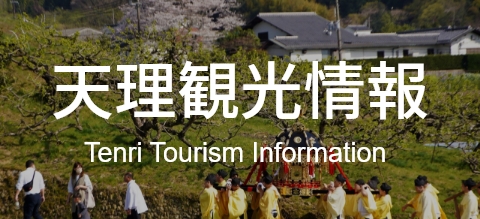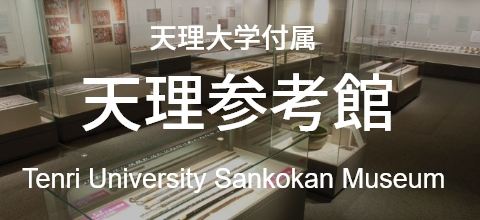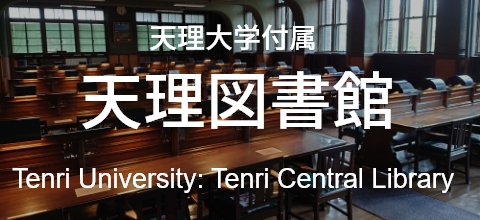「みなび」天理・山の辺Minabi Tenri・Yamanobe
天理の魅力を一言で申し上げますと、 天理・山の辺の道界隈は、日本文化の源流を感じる場であり、日本人の美意識や感性の本質に触れる機会を得ることができる場であるといえます。
天理は、京都から電車で1時間、奈良から15分の場所に位置し、どちらの文化とも異なる独自の価値を持ち、日本の歴史や文化の理解を深めるための重要な場所になっています。京都と奈良の文化の比較の中で、天理・山の辺界隈の文化を考えます。
京都は「雅び(みやび)」を象徴しています。貴族文化が発展した京都は、上品で優美な美意識を感じさせ、金閣寺や清水寺などの遺産に代表される、日本の風土に合わせた独自の国風文化が息づいています。この「雅び」によって、京都は日本の伝統文化の洗練された一面を体現し、特に観光客にとっての日本のイメージを形作っているといえます。
一方、奈良の文化は「鄙(ひなび)」と呼ばれ、素朴さと長い歴史を象徴しています。東大寺や興福寺などに見られるように、唐文化の影響を受けた国際的な天平文化が奈良には息づいており、京都とは異なる、歴史と共にある静かな風景が広がっています。このように、京都と奈良はそれぞれ異なる特色を持つ日本文化の顔といえます。
これに対して、天理・山の辺の文化は、京都や奈良の文化よりもはるかに古く、日本文化の源流と呼べる特別な価値を持っています。山の辺の道は日本最古の道とされ、古代から人々が往来し、祈りと共に生活が営まれてきた場所です。この道沿いの天理は、自然との共生から生まれた美意識を育み、祈りと静けさの中に美が調和する土地であり、神々が宿る聖地とされています。現在もその美意識は継承され、天理教の聖地として信仰と文化が共に根づき、地域の生活に静かに溶け込んでいます。
天理・山の辺界隈の文化には、3つの特徴があります。
一つ目は、「抽象度の高い文化」です。
華やかでわかりやすい歴史遺産が少ないため、京都や奈良のような観光地の華美さとは異なり、日本人が大切にしてきた美意識や感性と静かに向き合える場が広がっています。訪れる人々は、華美ではなく「何もない:エンプティネス」空間を歩く中で、自らの感性を通じて日本文化の深みに触れる機会を得ることができます。まさに、考え、想像し、自問することを促す場としての魅力がここにはあります。
二つ目の特徴は「静かな佇まい」が、天理・山の辺の道界隈に広がっていることです。
京都や奈良は観光地化し、賑わいのなかで日本文化を体験できますが、天理は静けさが保たれ、訪れる人々がリアルジャパンに出会うための落ち着いた空間があります。観光地の喧騒から離れて、穏やかな空気に身を委ねることで、日本人が古くから持つ感性の奥深さに触れることができます。この静けさこそが、「リアルジャパン」を体現する場であるとされる理由でもあります。
3つ目の特徴は、天理・山の辺界隈は「日本人の感性と美意識の源流」であることです。
日本を代表するデザイナーの原研哉氏が『白』の中で述べる「エンプティネス(空白)」の美意識に通じる場所が、天理にはあります。「満たされる可能性を秘めた空っぽ」という日本独特の空間が、天理には広がっています。四隅に杭を立て、縄を張り、その中に生まれる空間には、神がふらりと入るかもしれないという「かもしれない」余白があり、日本人はその可能性に対して静かに手を合わせ祈ってきました。天理の道を歩くことで、この「かもしれない」という可能性が感じられ、古代から続く日本人の祈りと美意識の根底に触れることができるでしょう。
さらに、天理・山の辺の文化を「みなび(源び)」と表現することで、京都の雅び、奈良の鄙びに続く、日本の美意識の原点がこの地にあることを意味づけることができます。「みなび(源び)」は、日本人の祈りと美意識の「源(みなもと)」を感じさせる町であり、豊かな自然と共生する中で生まれた祈りと、古人の美意識が今も伝わっています。
最後に、天理・山の辺の道界隈の風景は、自然に対する畏敬の念から生まれた祈りと、静寂の中で生まれる感性やイマジネーションを育む場であり、訪れる人々はこの地で日本文化の本質に触れることができます。 伝統と信仰、自然との共生が見事に調和したリアルジャパンの体験を体験することができる場と言えるでしょう。
天理市本通り商店街協同組合 理事長 酒谷雅典
“Minabi” Tenri・Yamanobe
The charm of Tenri can be summed up in one word:
The Tenri・Yamanobe Road area is a place where you can feel the origins of Japanese culture, and where you can have the opportunity to experience the essence of Japanese aesthetics and sensibilities.
Tenri is located one hour by train from Kyoto and 15 minutes from Nara, and has its own unique value that is different from both cultures, making it an important place to deepen your understanding of Japanese history and culture. In comparing the cultures of Kyoto and Nara, we will consider the culture of the Tenri・Yamanobe area.
Kyoto symbolizes “elegance”. Kyoto, where aristocratic culture developed, exudes a refined and elegant aesthetic sense, and is home to a unique national culture that is in line with the Japanese climate, as represented by heritage sites such as Kinkakuji Temple and Kiyomizu-dera Temple. This “elegance” allows Kyoto to embody a sophisticated side of traditional Japanese culture, and it can be said that it shapes the image of Japan, especially for tourists.
On the other hand, Nara’s culture is called “hinabi” (countryside), symbolizing simplicity and a long history. As seen in Todaiji Temple and Kofukuji Temple, the international Tenpyo culture influenced by Tang Dynasty culture is alive in Nara, and Nara has a quiet landscape with history that is different from Kyoto’s. In this way, Kyoto and Nara can be said to be the face of Japanese culture with different characteristics.
In contrast, the culture of Tenri and Yamanobe is much older than the cultures of Kyoto and Nara, and has special value that can be called the origin of Japanese culture. The Yamanobe Road is said to be the oldest road in Japan, and it is a place where people have traveled and prayed since ancient times. Tenri along this road has nurtured an aesthetic sense born from coexistence with nature, and is a land where beauty harmonizes with prayer and silence, and is considered a sacred place where gods reside. Even today, that aesthetic sense is inherited, and as a sacred place of Tenrikyo, faith and culture are both rooted, quietly blending into the life of the local area.
The culture of the Tenri-Yamanobe area has three characteristics.
The first is a “highly abstract culture.”
There are few flashy and easily understood historical heritage sites, so unlike the pomp of tourist destinations such as Kyoto and Nara, there are many places where you can quietly encounter the aesthetic sense and sensibility that Japanese people have cherished. Visitors can have the opportunity to experience the depth of Japanese culture through their own sensibilities as they walk through a space that is not flashy but “empty.” This is truly the charm of this place as it encourages you to think, imagine, and ask yourself questions.
The second characteristic is that a “quiet presence” is widespread around the Tenri-Yamanobe area.
Kyoto and Nara have become tourist destinations, and you can experience Japanese culture amid the hustle and bustle, but Tenri maintains tranquility and has a calm space where visitors can encounter real Japan. By leaving the hustle and bustle of tourist destinations and surrendering yourself to the calm air, you can experience the depth of the sensibility that Japanese people have had since ancient times. This tranquility is the reason why it is said to be a place that embodies “real Japan.”
The third characteristic is that the Tenri-Yamanobe area is the “source of Japanese sensibility and aesthetic sense.”
Tenri is a place that is connected to the aesthetic sense of “emptiness” that leading Japanese designer Hara Kenya describes in his book “Shiro.” Tenri is filled with a uniquely Japanese space of “emptiness that has the potential to be filled.” Stakes are erected at the four corners and ropes are stretched across the space, creating a space where a god might wander in, and Japanese people have prayed quietly to this possibility, putting their hands together. By walking the Tenri roads, you can feel this possibility of “maybe” and touch the roots of Japanese prayer and aesthetic sense that have continued since ancient times.
Furthermore, by describing the culture of Tenri-Yamanobe as “minabi (source),” it is possible to signify that this place is the origin of Japanese aesthetic sense, following the elegance of Kyoto and the rustic charm of Nara. Minabi is a town that evokes the source of Japanese prayer and aesthetic sense, where the prayers born out of coexistence with abundant nature and the aesthetic sense of the ancients are still passed down today.
Masanori Sakatani, Chairman of the Tenri City Main Street Shopping Street Cooperative Association












